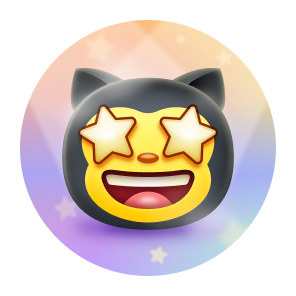I'm a backend / rendering / systems engineer with an embedded background — now focused on Rust backend, tooling, and systems development. I've designed ARM drivers, built cloud-connected firmware, created CLI and web tools, and automated real-world processes.
🚧
In early development
Techs: Rust, Tokio, TCP, Axum
Key features:
- Asynchronous server built with Tokio
- User account management using Axum
- Character ingame control using TCP
- ECS world structuring
- Database adapter for testability
Details
Overview
TODOAudio Spectrum remote controller with visualization
Techs: C, ESP-IDF, ESP32C3/S3, ESP-NOW WiFi packets, Remote control, DSP, FFT, RGB animation
Key features:
- Custom enclosure & matrix design
- ESP32S3 responsible for sampling, source selection, FFT, effect drawing, sending pixels colors
- ESP32C3 responsible for receiving pixels colors and controlling the matrix
- Real-time analog/digital audio sampling
- 2048 FFT float 32 signal processing
- 399-pixel WS2812B RGB LED matrix with custom animation effects
- LCD HMI for gain adjustment and effect selection
- sources: simulation, microphone, ADC wired
Details
Overview
The continuation of device to visualize audio signal using real-time FFT on an ESP32 platform, driving a 399-pixel RGB LED matrix with animated effects with additional WiFipackets communication.
Gameplay 4 players: 3 hiders one seeker
Techs: Rust, Tokio, TCP, Serde, WGPU, Clap, thiserror
Key features:
- Asynchronous server built with Tokio
- WGPU-powered game client with real-time rendering
- CLI client alternative
- TCP communication using a JSON-based protocol
- Fully tested: unit and integration tests for client–server interaction
Details
Overview
A multiplayer mini-game built from scratch in Rust, featuring a custom async game server and real-time graphical and CLI clients.
The game includes a lobby system, game state transitions, basic NPC behavior, and separate GUI roles depending on player type.
Project Scope
- Async server handling multiple client connections and managing game world state
- In-game chat system distinguishing between server and client messages
- Shared client logic with both CLI and WGPU-based GUI frontends
- Decoupled client connections from in-game character state
- Procedural world generation
- Basic NPC AI logic and movement
- Game state transitions: lobby → active game → summary
- Reward system and scoring logic for winning players
Techs: Rust, Axum, Serde, PDF, Clap, thiserror, palette, image
Key features:
- Uploads a source image
- Converts image into a printable diamond painting pattern
- Generates a DMC color palette and Bill of Materials
- (Coming soon) User accounts for project storage
Details
Overview
A personal project inspired by my wife’s hobby.
Users can upload an image, select available DMC colors, and receive a ready-to-print pattern along with a Bill of Materials (BOM) listing all required diamond colors and quantities.
Project Scope
- REST API with endpoints for uploading images and tracking processing status
- Image analysis and dithering using DMC-compatible palettes
- Color quantization and matching using perceptual color distance
- Generates high-resolution PDF output for printing
- Optional UI planned for future use
Techs: Rust, Tokio, Clap, thiserror, GDB
Key features:
- CLI tool to upload binary files to external memory via J-Link and GDB
- Interacts with GDB using subprocess communication
- Chunks binary files to match memory page alignment
- Supports uploading files up to 4MiB
Details
Overview
Command-line utility for uploading binary data to external NOR Flash on ARM-based devices using a J-Link debugging probe.
The upload process is mediated through a dedicated C-based upload API integrated into the firmware, which is called directly from the host via GDB during a debug session.
Responsibilities
- Studied and leveraged GDB’s ability to call target-resident C functions via `call` commands
- Wrote a set of C functions exposed in the target firmware to receive and write memory chunks
- Implemented GDB subprocess automation and communication from Rust
- Designed chunked, page-aligned transfer with status feedback
- Built a robust CLI around this mechanism for ease of use in production/test environments
Techs: C, C++, RTOS, Azure IoT HUB/DPS, TouchGFX, MQTT, HTTP, WebSocket, CRUD, TLS, STM32, ESP32
Key features:
- Responsive modern HMI,
- Logging to USB MSC & cloud
- Sterilization process selection
Details
Overview
Firmware for an Internet-connected steam sterilizer. Responsible for end-to-end embedded system design, including control logic, connectivity, and modern responsible user interface.
Responsibilities
- Low-level memory driver:
- Shared FMC bus: NOR + PSRAM with Read/Write management
- Buffering and caching
- External memory loading
- Failsafe filesystem
- Fragmentation monitoring
- WiFi connectivity:
- Manage WiFi connection
- Register device in Azure DPS using HTTPS
- Send telemetry, chunking & receive notification from IoT Hub via MQTTS
- Monitor new firmware & do OTA updates with backup
- RED Directive & service tools
- Implement HMI project:
- Custom TouchGFX components
- Optimized rendering
- External double framebuffer, external graphics data, FLASH write operations management
- Sterilization process control:
- Implementation of PID and hysteresis
- Heaters, pumps, valves control
- Optimizing physical process for speed
- USB dual-role:
- Host MSC to store process data, download firmware
- Device CDC/ACM Modbus for production, testing, and service
- LED strips:
- RGB animations
Techs: C, C++, CMake, Google Test, Linker script, STM32U5, Docker, VS Code, GDB server
Key features:
- Full DevContainer setup to replace legacy IDEs like STM32CubeIDE
- Streamlined VS Code tasks and launch configurations for building, flashing, and debugging
- Remote debugging via external GDB server
- Unit tests runnable both on host (Google Test) and target
- CMake-based build system compatible with CubeMX and TouchGFX code generation
Details
Overview
Embedded projects are notoriously difficult to transfer between machines or contributors.
This setup isolates the entire development environment inside a Docker DevContainer, making the project reproducible and portable across systems.
It replaces heavier IDEs (e.g., Eclipse-based tools) with a modern, faster workflow using VS Code and Linux-based builds.
Due to USB device mapping limitations in containers, the GDB server is run outside the container — but integrates cleanly with the VS Code debugging workflow.
Responsibilities
- Indepth knowledge how ST-Link and J-Link works
- Built a CMake-based project structure compatible with STM32CubeMX and TouchGFX codegen
- Integrated remote debugging through ST-Link and J-Link
- Wrote custom VS Code tasks and launch configurations for building, flashing, and testing
- Automated host-side unit tests with Google Test
- Analyzed .elf and .map files to enable reliable external memory loading (NOR/PSRAM via FMC) using GDB
- Replaced legacy IDEs with reproducible, Docker-based environment
Techs: C, ESP-IDF, JavaScript, HTML/CSS, PNG, Dithering, Captive Portal
Key features:
- ESP32-C3-based image frame with E-Ink display
- Hosts its own WiFi Access Point and web server
- JavaScript-based captive portal with image preview and upload
- Uploads, crops, and dithers PNG files in-browser
- Renders processed image on the E-Ink display
Details
Overview
A standalone E-Ink picture frame with built-in access point and web interface.
Designed to display user-uploaded images without needing external services.
The device serves a fully self-contained web app (HTML/CSS/JS), allowing users to crop, scale, dither, and upload images directly to the ESP32 for display.
Project Scope
- Developed embedded web server with JavaScript-based frontend
- Implemented captive portal for instant access after connecting
- Created image processing pipeline: crop → grayscale → dithering → upload
- Parsed and displayed PNG images on E-Ink display using custom rendering logic
- Designed minimal, UI-first UX for non-technical users
Techs: Python, PyGame, Tiled, TMX/TSX, Sprite animation, ECS-style design
Key features:
- Multilayer 2D RPG engine with animated pixel-art world
- Game object system using delegation over inheritance
- Custom property system for entity input, update, and render logic
- Support for TMX/TSX formats from Tiled map editor
- Collision system with object interaction and debug renderer
- Sprite + animation system with abstracted timing
Details
Overview
A 2D RPG engine inspired by classic top-down games like *Zelda*.
Built in Python with Pygame, it features a layered tile-based world, animated entities, and a component-driven object system.
While the project remains in development, it has laid a strong foundation for a full pixel-art RPG engine.
Project Scope
- Implemented an extensible object model using Python properties and composition
- Integrated TMX/TSX map parsing for Tiled-based level design
- Built a collision system with layered obstacle detection and visual debugging
- Developed pixel-art rendering pipeline with global scaling logic
- Introduced modular animations and entity state management
- Designed and integrated custom tilesets and graphics (WIP)
30+ ⭐ on GitHub · Featured on Instructables with 36k+ views and 190+ likes See project on Instructables ↗
Techs: C, ESP-IDF, ESP32, DSP, FFT, RGB animation
Key features:
- Custom enclosure & matrix design
- Real-time analog/digital audio sampling
- FFT signal processing on microcontroller
- 399-pixel WS2812B RGB LED matrix with custom animation effects
- Planned support for raw WiFi 802.11 audio streaming (in development)
Details
Overview
This project visualizes audio input using real-time FFT on an ESP32 platform, driving a 399-pixel RGB LED matrix with animated effects.
It’s designed for living room aesthetics, performance, and modular expandability
Techs: C++, ESP32, Bluetooth
Key features:
- Custom-built keyboard with programmable macro keys
- Sends hotkey combinations via Bluetooth HID profile
- Configurable actions for productivity
Details
Overview
A compact, Bluetooth-enabled macro keyboard built using an ESP32 board.
Designed to trigger custom key sequences for automation, shortcuts, and productivity tasks.
Project Scope
- Implemented HID over Bluetooth communication
- Programmed hotkey mapping logic using C++
Representative image. Similar view was recorded by our vessel inside the flooded shaft. Source: gazetawroclawska.
Techs: C++, Arduino, CAN, 3D design, 3D print, Camera, RC, LED lighting
Key features:
- Custom remote-controlled vessel designed for underground exploration
- Equipped with real-time video streaming and lighting
- Operated via CAN from 20 meters below surface level
- Designed for harsh, low-visibility flooded environments
Details
Overview
A commissioned project to explore a flooded mineshaft located ~20 meters underground in Lubań, Poland.
The vessel was designed to descend into the shaft via 10cm drill and transmit video footage for archaeological and safety assessment.
Project Scope
- Designed custom electronics and control system for vessel navigation
- Integrated video capture with LED lighting for visibility
- Built a watertight enclosure and propulsion system (partially successful)
- Supply power and control signals from the surface
- Contributed to one of the first serious technical attempts to explore the shaft — later fully successful in follow-up expeditions
Techs: Python, OpenCV, Custom GUI, 3D Design, 3D Printing
Key features:
- Real-time image processing for stain area detection
- Automated measurement of ink wear on printing drums
- Physical device designed and 3D-printed for stable imaging conditions
Details
Overview
This project was commissioned by a printing company to simplify and speed up the process of evaluating wear on printing cylinders.
Previously, this required expensive equipment and manual measurements. The new solution involved a custom device with fixed camera distance and lighting conditions, paired with OpenCV-based analysis.
Responsibilities
- Designed and 3D-printed a custom enclosure to maintain consistent camera positioning
- Implemented a Python + OpenCV script to calculate ink stain surface area
- Tuned thresholding, perspective correction, and region isolation for robustness
- Delivered an affordable and replicable device that reduced measurement time and cost
🧩 GQuarter: Custom 2D Game Engine & Editor
Techs: Java, LWJGL (OpenGL), Custom GUI, 3D rendering, Shaders
Key features:
- Custom game loop and rendering pipeline (OpenGL + GLSL shaders)
- Basic 3D graphics algorithms and scene graph structure
- Mipmapping, geomipmapping, fresnel effect, bloom, skybox
- Entity-Component System for object behavior and modularity
- Audio system for positional 3D sound playback
- Input system with mouse and keyboard support
- Integrated level editor with in-engine GUI
Details
Overview
A custom game engine and level editor built in Java using OpenGL and LWJGL. Developed over 2 years as a personal challenge to understand real-time rendering, ECS-like architecture, and cross-cutting systems like audio, terrain generation, and GUI handling.
The project helped me explore full-engine architecture and taught me key lessons about code structure, coupling, and the value of testing and separation of concerns.
Heavily inspired by ThinMatrix YouTube series.
Project Scope
- Custom OpenGL rendering pipeline and shader management
- Entity system for managing in-game objects
- Terrain rendering and water effects
- GUI and event system for in-engine editor tools
- Scene serialization and reloading
- Basic audio and camera logic
Competition video – Wrocław University of Science and Technology
📺 National TV feature – TVP Info
Techs: C++, Arduino, Inverse kinematics, Bluetooth
Key features:
- Custom mechanical design
- 3 degrees of freedom per leg
- Inverse kinematics for smooth body and leg motion
- Bluetooth-controlled via Android app
- Basic autonomous behavior using proximity sensors
Details
Overview
A six-legged walking robot designed and built in high school — combining mechanical engineering, embedded software, and robotics. The project earned awards at robotics tournaments and received national media coverage.
Project Scope
- Designed mechanical structure for body and 6 legs
- Wrote control algorithms for inverse kinematics and walking gait
- Implemented Bluetooth communication protocol
- Implemented basic autonomous behavior using sensor feedback (feet and head proximity)












